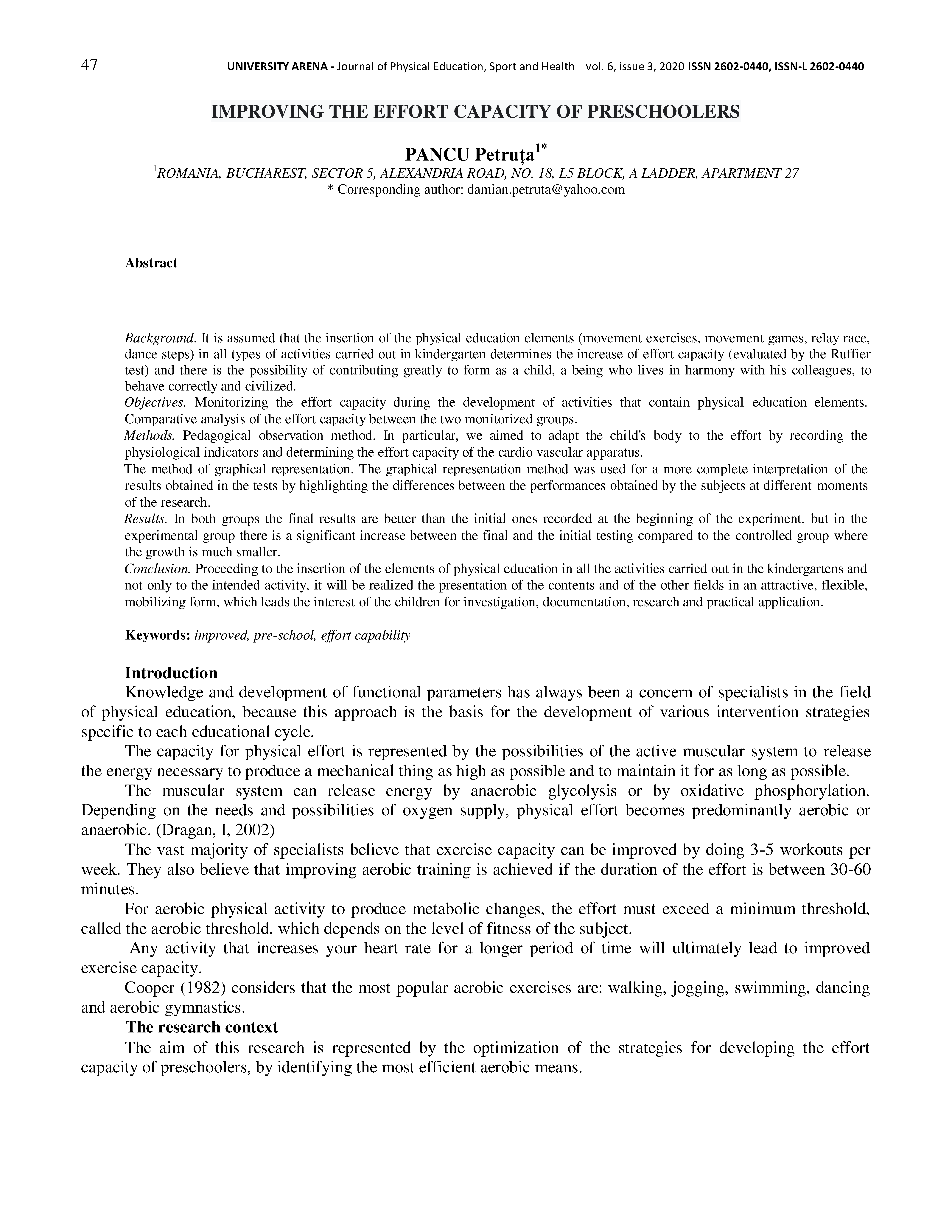IMPROVING THE EFFORT CAPACITY OF PRESCHOOLERS
DOI:
https://doi.org/10.62229/UaVi_3_20-7Keywords:
improved, pre-school, effort capabilityAbstract
Background. It is assumed that the insertion of the physical education elements (movement exercises, movement games, relay race, dance steps) in all types of activities carried out in kindergarten determines the increase of effort capacity (evaluated by the Ruffier test) and there is the possibility of contributing greatly to form as a child, a being who lives in harmony with his colleagues, to behave correctly and civilized.
Objectives. Monitorizing the effort capacity during the development of activities that contain physical education elements. Comparative analysis of the effort capacity between the two monitorized groups.
Methods. Pedagogical observation method. In particular, we aimed to adapt the child's body to the effort by recording the physiological indicators and determining the effort capacity of the cardio vascular apparatus.
The method of graphical representation. The graphical representation method was used for a more complete interpretation of the results obtained in the tests by highlighting the differences between the performances obtained by the subjects at different moments of the research.
Results. In both groups the final results are better than the initial ones recorded at the beginning of the experiment, but in the experimental group there is a significant increase between the final and the initial testing compared to the controlled group where the growth is much smaller.
Conclusion. Proceeding to the insertion of the elements of physical education in all the activities carried out in the kindergartens and not only to the intended activity, it will be realized the presentation of the contents and of the other fields in an attractive, flexible, mobilizing form, which leads the interest of the children for investigation, documentation, research and practical application.


